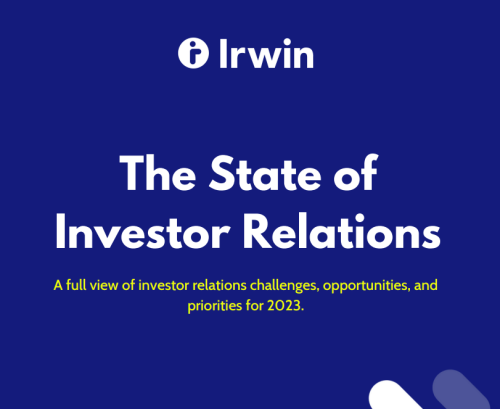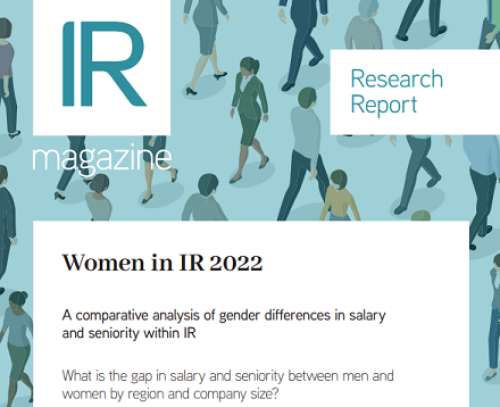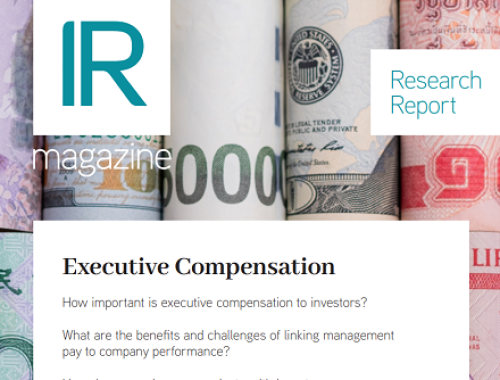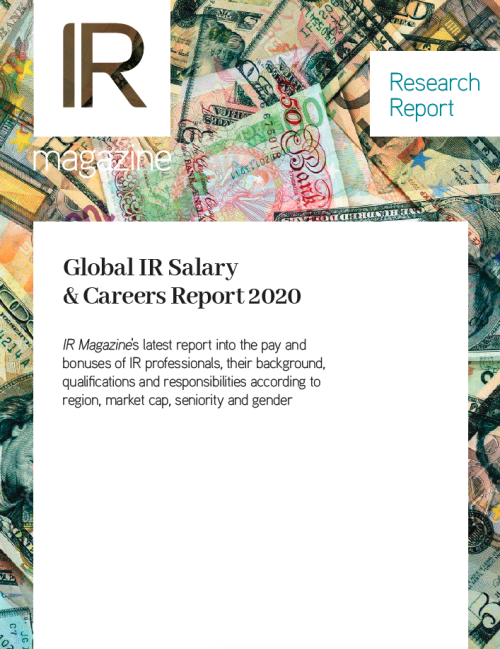A look at the winners of this year’s awards for best IR by an overseas company in the US
When Thomas Young became head of investor relations at Trina Solar in 2007, six months after the Chinese company listed on the NYSE, it was always the intention for him to be based in the US.
His new employer, a maker of solar panel products headquartered in Changzhou, Jiangsu province, could foresee its US operations expanding alongside its US investor base, making relocation westward – or homeward, from the perspective of the US-born Young – only a matter of time.
‘We knew the US market was going to grow so when we got to that critical mass, where we had real operations in the US, then it would be logical for me to be based there,’ he explains.
On a day-to-day basis Young is based in Trina Solar’s US headquarters in San Jose, California. Naturally, this means he can talk to American investors in real time, when the market opens – which is highly convenient when 70 percent of the equity is similarly US-based.
Trina’s investor base is anything but stagnant, however. The growing number of qualified domestic institutional investors in China, for instance, is proving to be a particularly rich source of investment for the alternative energy company.
In order to meet these geographically disparate demands, the three-person IR team at Trina Solar is split between the US and China: Young’s presence in the US is balanced by an IR manager and junior IR analyst located in China, alongside CFO Terry Wang.
Another benefit of having an IR foot in both the East and the West comes in serving the appetite US investors have for multiple visits to the company’s operations in Changzhou. ‘We were quite surprised over time that the same investors would always want to come out, sometimes twice a year, for two to three years,’ says Young. ‘They like the buzz and they figure that if we meet in Shanghai then we may as well talk on the phone from anywhere in the world.’
A fine balance
Finding this type of workable balance – between putting an IR representative close to the market and away from the company while keeping IR close at hand and having it make do with time zones, long-distance phone calls and frequent long-haul travel to communicate with the market – should be familiar to many overseas companies with a US listing.
According to IR Insight’s latest Global Practice Report, one in 10 European and Asian IR teams is split across multiple locations, with the US being the most popular secondary location.
Stateside, recognition of Trina Solar’s IR efforts came recently when Young was in New York to pick up the IR Magazine US Award for best IR in the US by an Asia-Pacific company. Trina triumphed over Alumina of Australia and the Chinese companies ChinaCast Education and iSoftStone.
‘The head of IR at Trina Solar was always responsive and knowledgeable when he was in China. Now that he has moved to the US he is even quicker but just as up to date on the company and the market,’ commented a sell-side analyst in the research. Another sell-sider congratulated the IR team for its responsiveness and the level of access it grants to the chief financial officer.
That same evening saw Eric Rojas, the head of IR at Shire, pick up the award for best IR in the US by a European firm. The investment community applauded Shire’s investor relations team for its accessibility, activity on the road and industry knowledge.
To win the prize, the UK-headquartered pharmaceuticals company beat off competition from the likes of SAP, BP and GlaxoSmithKline (GSK). All four companies have IR representatives permanently based in the US.
Talking about GSK, one sell-side respondent said, ‘I deal almost exclusively with the IR people at GSK in the US. They are responsive to requests for information and give good access to management during conferences.’ Likewise, BP received praise for its two IR people based in Houston, Texas.
Split forces
Shire, however, stands out from the European short list for locating its head of IR in the US – a feature it shares with Trina Solar.
Based in Massachusetts, Rojas is part of a four-member IR team at the $19 bn pharmaceuticals company, which is split down the middle: half in the UK, half in the US.
Shire’s shareholders are similarly divided between the US and the UK, with a smattering in continental Europe. More unique, perhaps, is the transatlantic split of the senior management team: chief executive Angus Russell is based in the US while CFO Graham Hetherington is in the UK.
Needless to say, the IR set-up at Shire translates into regular transatlantic travel commitments for Rojas. At minimum, he visits the UK every quarter to attend earnings calls with investors.
‘We do teleconferencing calls and also some ad hoc calls when a shareholder asks to speak with senior management,’ he says. ‘Our priority, however, remains face-to-face meetings and spending quality time with investors, and traveling once a quarter is not too bad.’ The same is true at Trina, where Young finds he is spending close to half his time in China.
Time constraints
Of course, not all foreign companies plump for a US representative. In fact, the majority of companies – nine out of 10 worldwide – keep the IR team at home, as the research from IR Insight shows.
Nor does such an approach preclude winning an IR award, as evidenced by Cielo winning the third and final category for overseas companies.
Brazil’s largest credit and debit card operator and payment processor, formerly called VisaNet, beat fellow Brazilians BM&F Bovespa and BRF – Brasil Foods to win best IR in the US by a Latin American company. All three companies are headquartered in São Paulo, and none has an IR representative outside of Brazil.
Instead of being praised for proximity, the trio were lauded by investors and analysts for having large and helpful IR teams. Commenting on BM&F Bovespa, one sell-side analyst pointed out, ‘Bovespa has the largest IR department of any of the firms I cover. This means there is always somebody to talk to when I call. The bonus is that all of them are well informed, so I can usually get an answer to my question then and there.’
Admittedly, there are a few obvious reasons why these Brazilian companies might differ from their counterparts in Europe and Asia – not least the favorable time difference between São Paulo and major US financial centers like New York, Chicago and Los Angeles.
There are certain company-specific differences, as well. Cielo’s and BM&F Bovespa’s stock are listed in São Paolo only, although Brasil Food’s ADRs trade on the NYSE.
What’s more, in Cielo’s case, US investors may account for 70 percent of the free float, but that free float represents only a 40 percent minority of the overall shares: two of the firm’s founders, the Brazilian banks Banco Bradesco and Banco do Brasil, make up the rest.
Irrespective of this, Roberta Bartoli de Noronha Shimizu, head of IR at Cielo, views her obligations in global terms. So far, Cielo has not been very active in other countries outside the US but Shimizu has plans to make the firm more visible this year in Canada, Mexico, Chile and Argentina.
Spreading out
Looking further ahead, she also wants to grow the investor base in Europe and Asia, as well as spread across the rest of Latin America. ‘We participate in conferences and non-deal roadshows and I think about the IR program as one, not mattering whether it is targeted at US, European or Brazilian investors,’ she says.
This global view of IR is true of Trina Solar, too. Lately the company has been increasing its investor base beyond the US and China, to Europe, where the IR team often attends conferences and undertakes annual roadshows. True, the US still accounts for the majority of the shares, but the remainder is split evenly between Asia and Europe, with roughly 15 percent in each region.
‘It’s a global world,’ Young notes. ‘Everyone is trading off Bloomberg, we all attend the same international conferences and we’ll see the same investors in New York, London, Munich, Hong Kong, Beijing and Shanghai. That’s not an exaggeration.’










